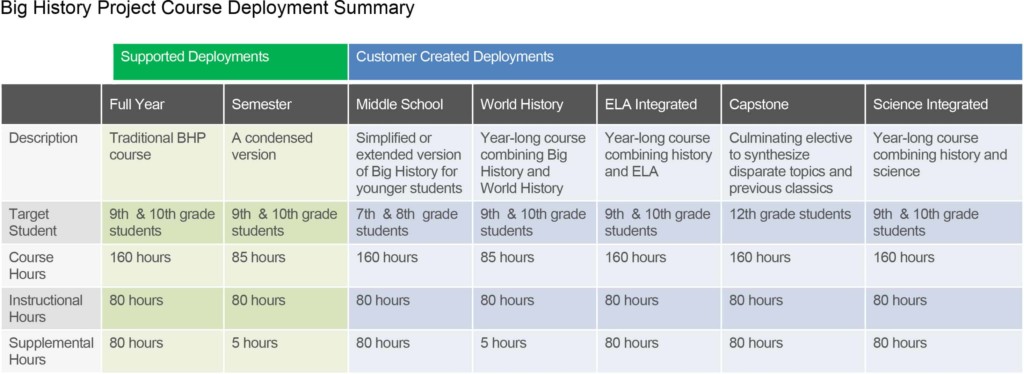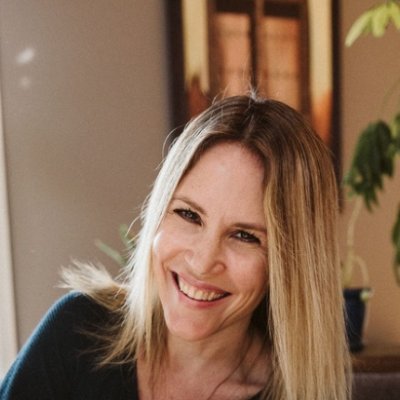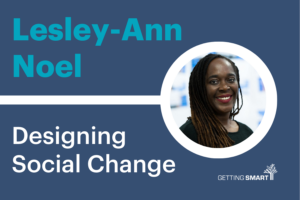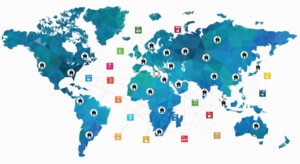Top 10 Reasons to Use Big History Project This School Year

Top 10 Reasons to Teach Using Big History Project This School Year
Humans interested in Humanity, proceed. Middle school and high school teachers interested in a cool integrated block, read on. High school principals interested in boosting engagement, critical thinking, and writing across the curriculum—we have a super block for you.
1. What is Big History?
Go to Big History Project’s website. To watch their 2 minute video introducing Big History, you simply click the play button on the Waffle House image (intrigued? You should be). You don’t have to sign up to watch it and learn more, but you will want to. And signing up is free. Big History Project is run by a non-profit organization (i.e. they are not out to sell anything to anyone), and it’s OPEN, FREE, and ONLINE. Enough said.
2. How do you teach the history of 13.8 billion years?
Big History does this through cool videos, animations, articles/texts, infographics, and classroom activities for middle and high school students. All course content comes with notes for teachers and are available for free online. There are also Project Based Learning activities in three units that take approximately two weeks, and follow the PBL method as outlined by Buck Institute.
3. How is it deployed in classrooms?
Supported deployments include teaching a traditional Big History Project Course or a condensed version with 9th and 10th grade students. Many schools teach Big History in lieu of World History. Additionally, teachers have adapted Big History Project to use content for middle and high school students in World History, Science, English/Language Arts, and in Project Based Learning/Capstone/Senior Project work. Check out the table below. The course is technology-based. Sometimes teachers will show videos to the whole class and use technology portions in the classroom, and distribute hard copies of the readings for students at home. Other times, teachers employ blended and personalized learning strategies, allowing students to explore BHP individually at their pace tailored to their specific interests, and work on lessons using technology in the classroom or for homework.

4. What are the essential skills and core concepts?
Essential skills include thinking across scales, integrating multiple disciplines (BHP teachers we interviewed reiterated this), and making and testing claims. Core concepts include threshold moments, collective learning, and origin stories.
5. How’s the history of 13.8 years organized?
Big History is divided into two sections and has a total of 10 units. Part 1: Formations and Early Life includes units around the Big Bang, stars and elements, the solar system and Earth, and the beginning of life on earth. Part 2: Humans includes units on early humans, agriculture and civilization, expansion and interconnection, acceleration, and the future.
6. Where can I learn more about joining a community of educators who teach using Big History Project?
Find Big History Project on Facebook, Twitter, and Yammer. Also, once you sign up, BHP has a community of educators on its site that share feedback, suggest new ideas, and contribute to the site for continual improvement. There are also Big History Project summits (including one in Seattle, where BHP is based) and at other “cluster meetings” in the US, Australia, and Canada. There’s also an International Big History Association, and they host conferences and events yearly.
7. Follow up to #2: How do you show 13.8 years of history in 18 minutes?
Founder of Big History Project and historian David Christian’s TED Talk titled “The History of Our World in 18 Minutes” is pretty mindblowing. Watch it with students, watch it with your fellow teachers, and watch it with your friends. And let the discussions commence.
8. What’s the effect of adding another zero?
This famous video, created by husband and wife team Ray and Charles Eames, was made for IBM in 1977. Called “The Powers of Ten,” it showcases the outer universe. Every ten seconds, we see the magnification of the camera for ten times farther out. Starting from a park on Lake Michigan in Chicago, we venture from that park until the galaxy where we reside is a speck of light. This video is also used in Big History Project to teach the relative size of all things in our universe. And it’s pretty mindblowing.
9. What do students and teachers say?
Hear from founder David Christian and students who use Big History in their classrooms here.
Amy Heibel, a middle school teacher in Washington state, said, “Big History does a good job explaining the theory of knowledge. How do we know what we know? How have people’s ideas about the universe changed over time? The kids are able to look at this from a social studies point of view. I love that it brings in some of the social studies and marries all of that with science.”
Traci Pannullo, a curriculum leader in New Jersey said that students realize learning “is bigger than what I am learning about in my classroom. Big History is organized in a way that makes students be able to take action. It gets students engaged and encourages critical thinking and they consider themselves a change agent. They engage in action and make a difference.” See more of Amy and Traci’s interviews here.
10. “It’s my favorite course of all time.”
Bill Gates met Big History Project founder David Christian and is a big supporter of their work. Bill Gates calls it his “favorite course of all time.” Gates funded the development of the content and related course resources.
This blog is brought to you by Big History Project as part of a series. For more stayed tuned for the Getting Smart on Big History bundle and see the other posts in this series:
Life’s Universal Themes Capture Student Engagement






Heather Margolis
Hi -
Is there an after school hours modification for elementary or middle school students ?
Thank you,
Heather